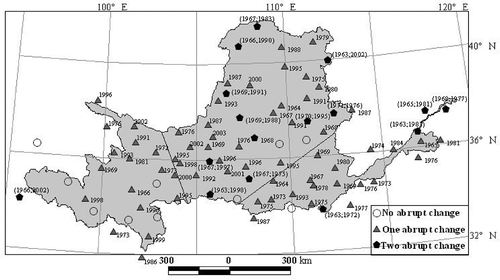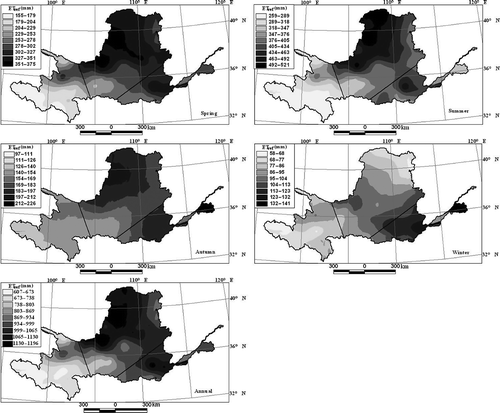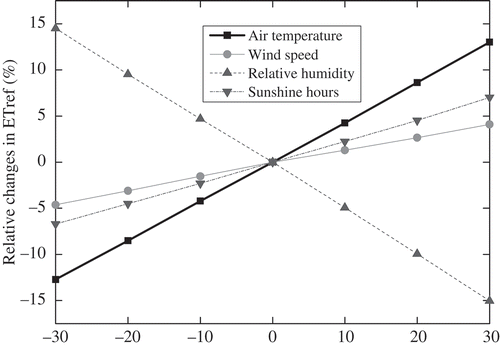Figures & data
Fig. 1 Location of the YRB and the meteorological stations used in this study (▴). The two straight lines show the division of the basin into upper, middle and lower regions.
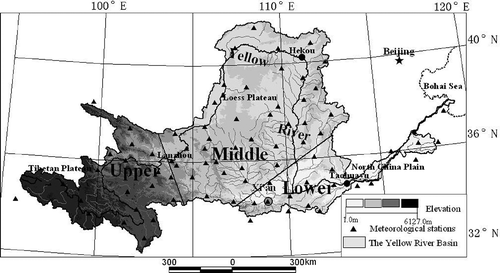
Fig. 2 Mean monthly variations of the key meteorological variables for: the upper, middle and lower regions (see ) and whole YRB in the period 1961–2006: (a) air temperature; (b) relative humidity; (c) wind speed; and (d) sunshine hours.
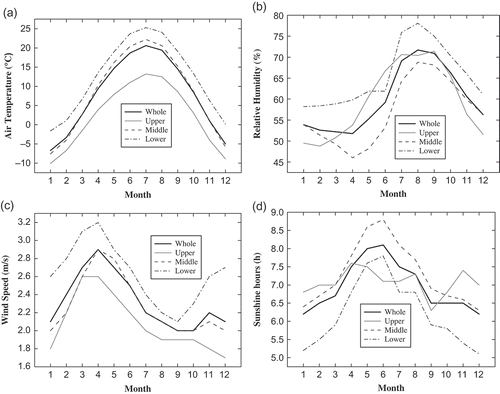
Fig. 4 The abrupt change tested by the Mann-Kendall method for annual ETref series of Yangcheng station for 1961–2006. Here, as the line C1 is over the confidence line (P = 0.05), the cross-over point of C1 and C2 is the start point of abrupt change in this series.
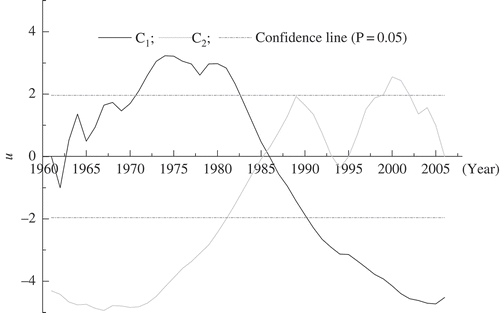
Fig. 5 The upward trends (▴), downward trends (▪), and no trends (○) in annual ETref in the YRB, China in the 1961–2006 period, detected by the Mann-Kendall method.

Fig. 6 The time and frequency of the abrupt changes in ETref detected by the M-K method in the YRB in the 1961–2006 period, with the years when abrupt changes occurred (where two abrupt changes were detected at one station, the years are in brackets).
